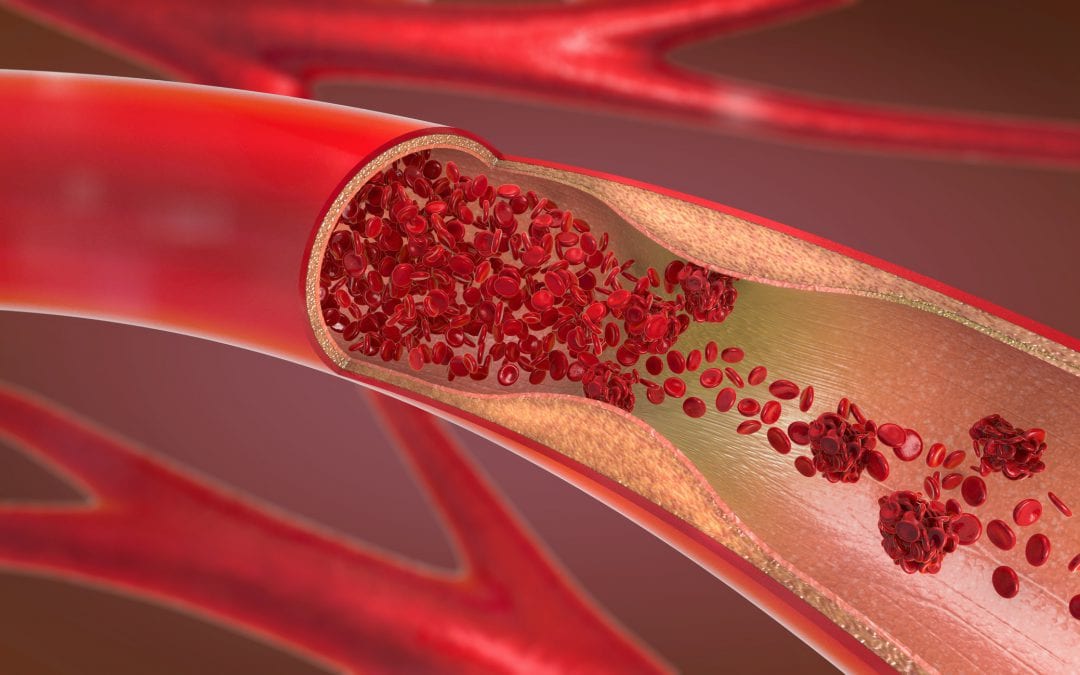The association between alcohol consumption and venous thromboembolism (VTE), also known as blood clots in the veins, is not yet clear. A recently published meta-analysis1 suggests that alcohol intake is not related with the risk of VTE. Although some results imply a potential protective role of moderate alcohol consumption against VTE for women. More research is needed.
What is already known? Low to moderate alcohol consumption has been associated with a decreased risk of arterial thrombosis2. However, the association between alcohol consumption and venous thromboembolism (VTE) risk has been investigated in various observational studies with inconsistent results. Some studies reported a reduced VTE risk associated with higher alcohol intake3,4, others reported a U-shaped relationship5, and yet others reported no association 6-8.
What does this study add? This is the first meta-analysis on this specific topic. The researchers examined the association by performing a meta-analysis of prospective studies. Ten prospective studies were included in this meta-analysis with a total of almost 450,000 individuals and more than 10,000 VTE cases.
Highest versus lowest analysis
Four included studies report the results separately by gender and are thus regarded as independent cohorts. Therefore, 14 cohorts are included in the final summary analysis. Overall, the highest consumption of alcohol is not associated with the VTE risk compared with the lowest group. Sensitivity analysis indicate that the pooled risk estimate becomes statistically significant when the study by Johansson et al.9, based on men, isremoved (RR, 0.92 (95% CI, 0.86–0.99)).
Dose-response analysis
Nine cohorts are included in the dose-response analysis. The researchers observe a linear decrease in VTE risk with increasing alcohol intake. However, the reduced risk is not statistically significant.
Women
In the subgroup analysis by sex, a borderline significant association between alcohol consumption and VTE risk is observed in women (RR, 0.91 (95% CI, 0.82–1.00)). Further large well-designed cohort studies are warranted to investigate a potential protective role of alcohol against VTE in women.
Mechanism
Several mechanisms have been proposed to support a potential relationship between alcohol intake and VTE risk. Dimmitt et al.10 report that alcohol intake is associated with factor VII, tissue plasminogen activator (tPA), and plasminogen activator inhibitor-1 (PAI-1). Mukamal et al.11 find that light-to-moderate alcohol intake isrelated with lower levels of coagulatory factors, but higher consumption was related with impaired fibrinolytic potential, which implies a J- or U-shaped relationship between alcohol intake and hemostatic parameters. However, in the current meta-analysis, the researchers don’t find evidence for this U-shaped association in the dose–response analysis.
About VTE
VTE has an estimated annual incidence rate of 1-2 events per 1,000 person-years. Trauma, cancer, pregnancy, and surgery are the well-established risk factors for provoked VTE. Approximately 25-40% of VTE events are unprovoked, and lifestyle factors like lack of physical activity and smoking may be important risk factors.1
Strengths
- Large sample size with no obvious heterogeneity
- Only prospective cohort studies included
- Sensitivity, dose-response, subgroup and publication bias analyses performed
Limitations
- Observational research – cannot prove causality
- Various cut-off values for the categories of alcohol intake used across studies
- Some studies included former drinkers in the reference group
References
- Chen Mengyan, Ji Mingxia, Chen Tiejiang, Hong Xiaofei, Jia Yian, Alcohol Consumption and Risk for Venous Thromboembolism: A Meta-Analysis of Prospective Studies , Frontiers in Nutrition, doi: 10.3389/fnut.2020.00032
- Lee KW, Lip GYH. Effects of lifestyle on hemostasis, fibrinolysis, and platelet reactivity: a systematic review. Arch Intern Med.(2003) 163:2368–92. doi: 10.1001/archinte.163.19.2368
- Lindqvist PG, Epstein E, Olsson H. The relationship between lifestyle factors and venous thromboembolism among women: a report from the MISS study. Br J Haematol.(2009) 144:234–40. doi: 10.1111/j.1365-2141.2008.07460.x
- Lutsey PL, Steffen LM, Virnig BA, Folsom AR. Diet and incident venous thromboembolism: the Iowa Women’s Health Study. Am Heart J.(2009) 157:1081–7. doi: 10.1016/j.ahj.2009.04.003
- Gaborit FS, Overvad K, Nørgaard M, Kristensen SR, Tjønneland A, Severinsen MT. Alcohol intake and risk of venous thromboembolism. A Danish follow-up study. Thromb Haemost.(2013) 110:39–45. doi: 10.1160/TH12-10-0790
- Hansen-Krone IJ, Brækkan SK, Enga KF, Wilsgaard T, Hansen J-B. Alcohol consumption, types of alcoholic beverages and risk of venous thromboembolism – the Tromsø Study. Thromb Haemost.(2011) 106:272–8. doi: 10.1160/TH11-01-0043
- Holst AG, Jensen G, Prescott E. Risk factors for venous thromboembolism: results from the Copenhagen City Heart Study. (2010) 121:1896–903. doi: 10.1161/CIRCULATIONAHA.109.921460
- Varraso R, Kabrhel C, Goldhaber SZ, Rimm EB, Camargo CA Jr. Prospective study of diet and venous thromboembolism in US women and men. Am J Epidemiol. (2012) 175:114–26. doi: 10.1093/aje/kwr377
- Johansson M, Johansson L, Wennberg M, Lind M. Alcohol consumption and risk of first-time venous thromboembolism in men and women. Thromb Haemost.(2019) 119:962–70. doi: 10.1055/s-0039-1681100
- Dimmitt SB, Rakic V, Puddey IB, Baker R, Oostryck R, Adams MJ, et al. The effects of alcohol on coagulation and fibrinolytic factors: a controlled trial. Blood Coagul Fibrinolysis.(1998) 9:39–45. doi: 10.1097/00001721-199801000-00005
- Mukamal KJ, Jadhav PP, D’Agostino RB, Massaro JM, Mittleman MA, Lipinska I, et al. Alcohol consumption and hemostatic factors: analysis of the Framingham Offspring cohort. (2001) 104:1367–73. doi: 10.1161/hc3701.096067

